2021-01-28 - Nº 300
Editorial
Esta é a Newsletter Nº 300 que se apresenta com o mesmo formato que as anteriores. Se gostar da Newsletter partilhe-a!
Todas as Newsletters encontram-se indexadas no link.
Esta Newsletter tem os seguintes tópicos:
Faz hoje anos que nascia, em 1608, o Matemático e físico italiano Giovanni Alfonso Borelli. Ele foi o primeiro a aplicar as leis da mecânica à acção muscular do corpo humano. Em De motu animalium (Concerning Animal Motion, 1680), ele descreveu correctamente o esqueleto e os músculos como um sistema de alavancas e explicou o mecanismo do voo dos pássaros. Ele calculou as forças necessárias para o equilíbrio em várias articulações do corpo muito antes da mecânica de Isaac Newton. Ele fez dissecações anatómicas, desenhou um respirador de mergulho, investigou vulcões, foi o primeiro a sugerir um caminho parabólico para cometas e considerou que Júpiter tinha uma influência de atracção nas suas luas.
Faz também hoje anos que nascia, em 1857, o Inventor americano William Seward Burroughs. Ele inventou a primeira máquina de somar com gravação comercialmente viável do mundo e foi pioneiro na sua fabricação. Ele foi inspirado pela sua experiência no início da sua carreira como caixa de banco. A 10 de Janeiro de 1885, ele apresentou a sua primeira patente para a sua "máquina de calcular" mecânica. Burroughs foi co-fundador da American Arithmometer Co em 1886 para desenvolver e comercializar a máquina. A empresa mais tarde se tornou Burroughs Corporation (1905) e, eventualmente, Unisys.
Faz igualmente hoje anos que nascia, em 1884, os irmãos Jean Piccard e Auguste Piccard. Jean era um engenheiro químico e balonista suíço-americano e Auguste era um físico suíço-belga e balonista. A sua primeira subida de balão foi em 1913. Em 1934, Jean faz o primeiro voo estratosférico bem-sucedido através das nuvens, subindo a uma altura de 18 km acompanhada da sua esposa. Em 1936, Jean voou com sucesso o primeiro balão de filme plástico, que ele inventou e desenvolveu, o precursor do balão de filme plástico para experiências de alta altitude ainda usados para fins científicos. Em 1937, ele fez uma subida de 3.350 metros para testar uma gôndola de metal presa a um aglomerado de 98 balões. Ele também desenvolveu uma janela resistente ao gelo para gôndolas de balão e um sistema electrónico para esvaziar os sacos de lastro. Por outro lado, Auguste, para além da alta estratosfera, explorou as profundezas do mar em navios de sua própria autoria. Em 1930 ele construiu um balão para estudar os raios cósmicos. Em 1932 ele desenvolveu um novo projecto de cabine para balões e no mesmo ano subiu de balão numa gôndola pressurizada até 16.916 m. Em voos posteriores, ele alcançou 72.000 pés. Ele cunhou a palavra batiscafo para designar o seu navio de mergulho profundo navegável. Em 1954, um bastiscafo atingiu a 4.176 m de profundidade.
Faz também hoje anos que nascia, em 1886, o engenheiro electrotécnico japonês Hidetsugu Yagi. Ele ficou conhecido por ter desenvolvido juntamente com Shintaro Uda em 1926 a antena Yagi. O seu formato permite a comunicação direccional usando ondas electromagnéticas e agora está instalada em milhões de residências em todo o mundo para recepção de rádio e televisão.
Faz igualmente hoje anos que nascia, em 1903, a Cristalógrafa britânica Kathleen Lonsdale. Ela desenvolveu várias técnicas de raios-X para o estudo da estrutura cristalina. A sua determinação experimental da estrutura do anel de benzeno por difração de raios-X, que mostrou que todas as ligações C-C do anel eram do mesmo comprimento e todos os ângulos das ligações C-C-C internas eram de 120 graus, teve um enorme impacto na química orgânica. Ela foi a primeira mulher a ser eleita (1945) para a Royal Society of London.
Faz também hoje anos que nascia, em 1905, o inventor americano de origem turca Luther Simjian. Ele foi responsável por mais de 200 invenções que incluíram o TelePrompter, uma câmara de retratos, equipamento de medição automática de postagem e um campo de prática de golfe coberto. Na Segunda Guerra Mundial, o seu Range Estimation Trainer forneceu um simulador para os pilotos aprenderem a identificar os tipos de aeronaves, sua distância e velocidade. Ele usava espelhos móveis sincronizados, iluminação controlada e um avião em miniatura para apresentar várias velocidades, iluminação e ângulos.
Por fim, faz hoje anos que nascia, em 1922, o bioquímico americano Robert W. Holley. Ele partilhou o Prémio Nobel da Medicina de 1968 (com Marshall Warren Nirenberg e Har Gobind Khorana). Os três cientistas conduziram de forma independente pesquisas que ajudaram a decifrar quimicamente o código genético e a explicar como a informação genética armazenada no DNA de uma célula controla a síntese de proteínas, os blocos de construção das células.
Em 1887 começava a construção da torre Eiffel em Paris. A sua construção demorou pouco mais de 2 anos e durante os 41 anos seguintes foi o edifício mais alto construído pelo Homem com 324 metros de altura.
Hoje é também, o Dia Internacional do LEGO, marcando 63 anos desde que Godtfred Kirk Christiansen patenteou a peça de LEGO 2 × 4 original. Esta não foi a primeira vez que a peça de LEGO chegou às mãos de crianças, é claro. Na verdade, ela já estava à venda há cerca de nove anos - mas a 28 de Janeiro de 1958 às 13:58 que o filho do fundador da empresa registou a patente do desenho.
Também neste dia, mas em 1998, Andy Nelson e o navegador Bertrand Piccard, no Breitling Orbiter II, partiram para estabelecer o recorde mundial de resistência em nove dias e 17 horas - ou, para ser exato, 233 horas e 55 minutos. A viagem foi interrompida quando eles não puderam sobrevoar a China. A preparação durou mais de quatro anos com uma equipa de 13 pessoas. Bertrand é neto do pioneiro do voo em balão, Auguste Piccard.
Faz hoje 35 anos que se deu o desastre do Space Shuttle Challenger. Após alguns segundos da sua descolagem o vaivém explode e mata todos os seus 7 tripulantes. A investigação às causas do acidente determinou que a cultura organizacional e os processos de tomada de decisão da NASA foram factores chave para que contribuíram para o acidente, com a agência a violar as suas próprias regras de segurança. Desde 1977 que era conhecido um problema no desenho dos SRB (Solid Rocket Booster) que continha uma potencial falha catastrófica nos anéis de vedação. A gestão da NASA ignorou os avisos dos engenheiros que existiam perigos do lançamento ser efectuado nas condições de baixas temperaturas que estavam a ocorrer naquela manhã. A frota de Space Shuttles era constituída por quatro vaivéns operacionais, o Columbia, o Challenger, o Discovery e o Atlantis. Posteriormente foi construído o Endeavour para substituir o Challenger. Houve mais um acidente catastrófico com o Columbia em 2003. No total, foram feitas 133 missões com sucesso entre 1981 e 2011.
Nesta semana que passou a SpaceX bateu mais um recorde, colocando em orbita 143 satélites num único lançamento. O foguetão Falcon 9 descolou às 10h EST do Complexo de Lançamento Espacial 40 na Estação da Força Espacial de Cabo Canaveral, na Flórida. O foguetão reutilizável transportou 133 satélites comerciais e governamentais e 10 satélites Starlink para o espaço.
A Newsletter desta semana tem um número redondo de 300, sendo publicada semanalmente sem interrupções. Trata-se de um feito que nem eu próprio acreditaria se me tivessem dito no início desta aventura. Para comemorar este marco, fizemos melhorias bastante significativas na forma como disponibilizamos a newsletter online e passámos a contar com um serviço muito mais estável e rápido.
Na Newsletter desta semana apresentamos diversas noticias, artigos científicos assim como projetos de maker. É apresentada a revista MagPI Magazine nº 102.
 João Alves ([email protected])
João Alves ([email protected])
O conteúdo da Newsletter encontra-se sob a licença  Creative Commons Attribution-NonCommercial-ShareAlike 4.0 International License.
Creative Commons Attribution-NonCommercial-ShareAlike 4.0 International License.
Novidades da Semana

Need a lift? SpaceX launches record spacecraft in cosmic rideshare program
"A veteran rocket from billionaire entrepreneur Elon Musk’s SpaceX aerospace company launched 143 spacecraft into space on Sunday, a new record for the most spaceships deployed on a single mission, according to the company. The Falcon 9 rocket lifted off at 10 a.m. EST from the Space Launch Complex 40 at Cape Canaveral Space Force Station in Florida. It flew south along the eastern coast of Florida on its way to space, the company said. The reusable rocket ferried 133 commercial and government spacecraft and 10 Starlink satellites to space - part of the company’s SmallSat Rideshare Program, which provides access to space for small satellite operators seeking a reliable, affordable ride to orbit, according to the company. SpaceX delayed the launch one day because of unfavorable weather. On Jan. 22 Musk, also chief executive of Tesla Inc., wrote on Twitter: “Launching many small satellites for a wide range of customers tomorrow." [...]
Outras Notícias

Micron Delivers Industry’s First 1α DRAM Technology
"Micron Technology, Inc. (Nasdaq: MU), today announced volume shipment of 1α (1-alpha) node DRAM products built using the world’s most advanced DRAM process technology and offering major improvements in bit density, power and performance. This milestone reinforces Micron’s competitive strength and complements its recent breakthroughs with the world’s fastest graphics memory and the first-to-ship 176-layer NAND. “This 1α node achievement confirms Micron’s excellence in DRAM and is a direct result of Micron’s relentless commitment to cutting-edge design and technology,” said Scott DeBoer, executive vice president of technology and products at Micron. “With a 40% improvement in memory density over our previous 1z DRAM node, this advancement will create a solid foundation for future product and memory innovation.” Micron plans to integrate the 1α node across its DRAM product portfolio this year to support all environments that use DRAM today. The applications for this new DRAM technology are extensive and far reaching — enhancing performance in everything from mobile devices to smart vehicles. Micron continues memory leadership momentum across multiple market segments “Our new 1α DRAM technology will enable the industry’s lowest-power mobile DRAM as well as bring the benefits of our DRAM portfolio to data center, client, consumer, industrial and automotive customers,” said Sumit Sadana, executive vice president and chief business officer at Micron." [...]

NASA CubeSat to Demonstrate Water-Fueled Moves in Space
"A NASA CubeSat will launch into low-Earth orbit to demonstrate a new type of propulsion system. Carrying a pint of liquid water as fuel, the system will split the water into hydrogen and oxygen in space and burn them in a tiny rocket engine for thrust. NASA’s Pathfinder Technology Demonstrator, or PTD, series of missions demonstrates novel CubeSat technologies in low-Earth orbit, providing significant enhancements to the performance of these small and effective spacecraft. The first mission of the series, PTD-1, is slated to launch this month aboard a SpaceX Falcon 9 rocket on the Transporter-1 mission from Cape Canaveral Space Force Station in Florida. In another project, NASA is also sending a swarm of three CubeSats, known as V-R3x, to demonstrate autonomous radio networking and navigation. "We have a driving need for small spacecraft propulsion systems," said David Mayer, PTD-1 project manager at NASA’s Ames Research Center in California’s Silicon Valley." [...]

A Sense of Responsibility: Lidar Sensor Makers Build on NVIDIA DRIVE
"When it comes to autonomous vehicle sensor innovation, it’s best to keep an open mind — and an open development platform. That’s why NVIDIA DRIVE is the chosen platform on which the majority of these sensors run. In addition to camera sensors, NVIDIA has long recognized that lidar is a crucial component to an autonomous vehicle’s perception stack. By emitting invisible lasers at incredibly fast speeds, lidar sensors can paint a detailed 3D picture from the signals that bounce back instantaneously. These signals create “point clouds” that represent a three-dimensional view of the environment, allowing lidar sensors to provide the visibility, redundancy and diversity that contribute to safe automated and autonomous driving. Most recently, lidar makers Baraja, Hesai, Innoviz, Magna and Ouster have developed their offerings to run on the NVIDIA DRIVE platform to deliver robust performance and flexibility to customers." [...]

Pioneering quantum hardware allows for controlling up to thousands of qubits at cryogenic temperatures
"Quantum computing could impact chemistry, cryptography, and many more fields in game-changing ways. The building blocks of quantum computers are not just zeroes and ones but superpositions of zeroes and ones. These foundational units of quantum computation are known as qubits (short for quantum bits). Combining qubits into complex devices and manipulating them can open the door to solutions that would take lifetimes for even the most powerful classical computers. Despite the unmatched potential computing power of qubits, they have an Achilles’ heel: great instability. Since quantum states are easily disturbed by the environment, researchers must go to extraordinary lengths to protect them." [...]

Renesas Adds New Entry-Line RA2E1 MCU Group to RA Family to Address Cost-Sensitive and Space-Constrained Applications
"Based on the 32-bit Arm Cortex-M23 Core, 48 New RA2E1 MCUs Encompass a Wide Range of Memory, Operating Voltage and Package Options Renesas Electronics Corporation (TSE:6723), a premier supplier of advanced semiconductor solutions, today announced the expansion of its 32-bit RA2 Series microcontrollers (MCUs) with 48 new RA2E1 Group MCUs. Based on the 48-MHz Arm® Cortex®-M23 core, the RA2E1 MCUs are entry-line, single-chip devices with up to 128-KB code flash and 16-KB SRAM memory. The RA2E1 Group MCUs support a wide operating voltage range of 1.6V to 5.5V and a large selection of packages such as LQFP, QFN, LGA, BGA and Wafer Level Chip Scale Package (WLCSP). They deliver optimized combinations of superior performance, ultra-low-power consumption, innovative peripherals and small package options. These features make the RA2E1 Group ideal for cost-sensitive applications and other systems requiring high performance and low-energy consumption in space-constrained applications. The new MCUs offer an upgrade path with hardware and software scalability, so they are the perfect entry point into the wide line-up of the Renesas RA family." [...]
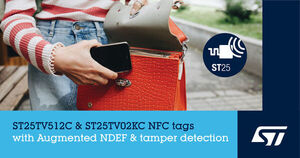
STMicroelectronics Powers Creative NFC Applications with Dynamic Message Content and Anti-Tamper in New Type-5 Tags
"Uniquely combining NFC Type-5 properties with augmented NDEF (NFC Data Exchange Format) and tamper detection, STMicroelectronics’ ST25TV512C and ST25TV02KC tags let developers leverage NFC contactless communication in new and imaginative ways for applications in consumer engagement, brand recognition, supply-chain management, and access control. The ISO/IEC 15693-compliant NFC Type-5 tags1 respond both to smartphones and 13.56MHz long-range RFID readers and allow native exchange of NDEF messages without a mobile app. Moreover, Augmented NDEF allows dynamically updated information such as tamper status or a personalized URL to be added to NDEF messages. Up to six different attributes can be configured to append to the message including a Unique Tap Code (UTC) that makes messages unique and dynamic at each tap of the tag. With the added benefit of tamper detection in the ST25TV02KC-T variant, use cases that need to verify the integrity of assets can leverage the enhanced flexibility of Augmented NDEF communication. All devices feature state-of-the-art protection services, which include a 64-bit encrypted password with failed-attempt counter for data safety, TruST25™ digital-signature services to verify die authenticity, and untraceable and kill modes to protect user privacy." [...]

Renesas Expands Inductive Position Sensing Portfolio to Automotive Motor Commutation with IPS2550 Sensor
"Magnet-Free Contact-less Sensor Delivers High Accuracy, Easy Customization, and Smaller Weight and Size with Total Stray Field Immunity for Automotive Renesas Electronics Corporation (TSE:6723), a premier supplier of advanced semiconductor solutions, today launched its magnet-free IPS2550 inductive position sensor. Featuring improved performance and easy customization, as well as total stray field immunity, and reduced weight and form factor, the IPS2550 is ideal for use as an absolute position sensor for high-speed motor commutation in passenger cars, heavy-duty commercial and off-road vehicles as well as motorbikes. With its optimized bill-of-materials, the new sensor allows customers to cost effectively tailor sensor design for their applications and maximize the performance of the sensor’s accuracy. Customers can also take advantage of a complete motor commutation solution for traction motors, electronic power steering, starter generators, and other motor applications when combining the new sensor with Renesas microcontrollers (MCUs), gate drivers, and motor drivers. “We are excited with the response to the new inductive position sensing technology we introduced last June for industrial motors, and we look forward to bringing its advantages to automotive customers with the new IPS2550,” said Christian Wolf, Vice President, Automotive Sensor Business Division at Renesas. “The IPS2550 provides a slimmer and lighter contact-less sensor that continues to deliver the high performance and stability that automotive applications demand combined with the flexibility and ease of customization that enable businesses to manufacture their own resolver or magnetic sensor replacement cost effectively.” Based on Renesas’ inductive position sensing technology, the magnet-free IPS2550 delivers speeds up to 600 krpm (electrical) and is designed around the motor, accommodating both off-axis (through shaft and side shaft) and on-axis positioning." [...]
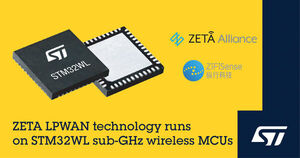
STMicroelectronics Joins ZETA Alliance to Promote Emerging Long-Range IoT Connectivity Standard
"STMicroelectronics, a global semiconductor leader serving customers across the spectrum of electronics applications, has joined the ZETA Alliance, the industry body promoting ZETA Low-Power Wide Area Network (LPWAN) technology for low-cost long-range IoT connectivity. ZETA technology is quickly becoming established throughout China, Japan, and beyond, bringing together innovative wireless technologies that enable low-power, low-cost devices to rely on robust connections over extended distances. In addition, native support for mesh networking, which allows peer-to-peer communication among the network nodes, boosts network coverage and resilience. Joining the Alliance as a Promoter member, ST expects ZETA technology to further accelerate the spread of IoT in all territories worldwide. The standard lets developers create high-value IoT-based solutions to challenges that face extreme cost constraints. “ZETA has a strong value proposition and is taking its place among established LPWAN technologies, boosting choice and flexibility for solution developers and enabling the IoT to deliver even greater benefits to more end users,” said Hakim Jaafar, STM32 Wireless Marketing Director, STMicroelectronics." [...]
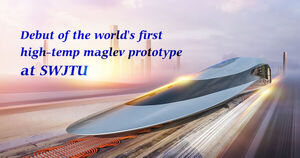
Debut of the world's first high-temp maglev prototype at SWJTU
"The world's first high-temperature superconducting high-speed maglev engineering prototype and its test line were launched on January 13, 2021 at Southwest Jiaotong University in Chengdu. Epitomizing a landmark step forward, the prototype is designed and developed independently by China based on the original technology of Southwest Jiaotong University. Many new technologies are incorporated in the prototype, such as the ones for full carbon fiber lightweight body, low resistance locomotive shape, and high temperature superconducting maglev with large load capacity. At the design speed of 620 km/h, the vehicle is expected to create a new speed record for land transportation in atmospheric environment and in future bring proactive and disruptive changes to rail transit industry with the application of low vacuum tube (tunnel) technology. Southwest Jiaotong University, the birthplace of the high temperature superconducting maglev technology, has predominated in the basic theoretical research and key technology innovation since the 1980s. In 2020, the University collaborated with China Railway Rolling Corporation (CRRC), China Railway Group Limited, and other institutions and companies, embarked on the manufacture of the prototype and test line, and built the integrated high-temperature superconducting high-speed maglev transit system." [...]

Loon’s final flight
"When we unveiled Loon in June 2013, we meant everything in its name. It was a way-out-there and risky venture. Not just fragile-balloons-on-the-edge-of-space risky, but risky at the core of the question it was asking. Could this be the radical idea that might finally bring abundant, affordable Internet access, not just to the next billion, but to the last billion? To the last unconnected communities and those least able to pay? Sadly, despite the team’s groundbreaking technical achievements over the last 9 years — doing many things previously thought impossible, like precisely navigating balloons in the stratosphere, creating a mesh network in the sky, or developing balloons that can withstand the harsh conditions of the stratosphere for more than a year — the road to commercial viability has proven much longer and riskier than hoped." [...]

SpaceX adds laser crosslinks to polar Starlink satellites
"The first Starlink satellites launched to polar orbit are equipped with laser crosslinks, a technology the company plans to add to other satellites next year. SpaceX included 10 Starlink satellites on its Transporter-1 dedicated rideshare launch Jan. 24. Those satellites are the first in the Starlink constellation SpaceX has deployed to polar orbit, after winning Federal Communications Commission to do so Jan. 8. In tweets after the launch, Elon Musk, founder and chief executive of SpaceX, said those satellites were equipped with laser intersatellite links. “These also have laser links between the satellites, so no ground stations are needed over the poles,” he said in response to one tweet about the launch. Intersatellite links allow satellites to transfer communications from one satellite to another, either in the same orbital plane or an adjacent plane." [...]
Ciência e Tecnologia
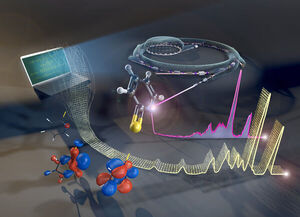
An efficient tool to link X-ray experiments and ab initio theory
"The electronic structure of complex molecules and their chemical reactivity can be assessed by the method of resonant inelastic X-ray scattering (RIXS) at BESSY II. However, the evaluation of RIXS data has so far required very long computing times. A team at BESSY II has now developed a new simulation method that greatly accelerates this evaluation. The results can even be calculated during the experiment. Guest users could use the procedure like a black box. Molecules consisting of many atoms are complex structures." [...]
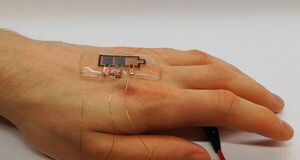
Biodegradable Displays for Sustainable Electronics
"In the next years, increasing use of electronic devices in consumables and new technologies for the internet of things will increase the amount of electronic scrap. To save resources and minimize waste volumes, an eco-friendlier production and more sustainable lifecycle will be needed. Scientists of Karlsruhe Institute of Technology (KIT) have now been the first to produce displays, whose biodegradability has been checked and certified by an independent office. The results are reported in the Journal of Materials Chemistry. (DOI: 10.1039/d0tc04627b) “For the first time, we have demonstrated that it is possible to produce sustainable displays that are largely based on natural materials with the help of industrially relevant production methods. After use, these displays are no electronic scrap, but can be composted." [...]

A little soap simplifies making 2D nanoflakes
"Rice lab’s experiments refine processing of hexagonal boron nitride Just a little soap helps clean up the challenging process of preparing two-dimensional hexagonal boron nitride (hBN). Rice University chemists have found a way to get the maximum amount of quality 2D hBN nanosheets from its natural bulk form by processing it with surfactant (aka soap) and water. The surfactant surrounds and stabilizes the microscopic flakes, preserving their properties. Experiments by the lab of Rice chemist Angel Martí identified the “sweet spot” for making stable dispersions of hBN, which can be processed into very thin antibacterial films that handle temperatures up to 900 degrees Celsius (1,652 degrees Fahrenheit). The image displays the exfoliation of hexagonal boron nitride into atomically thin nanosheets aided by surfactants, a process refined by chemists at Rice University. Illustration by Ella Maru StudioThe work led by Martí, alumna Ashleigh Smith McWilliams and graduate student Cecilia Martínez-Jiménez is detailed in the American Chemical Society journal ACS Applied Nano Materials." [...]

Zapping Quantum Materials With Lasers Tells Us How Atoms Relate
"Following is a guest post by Lex Kemper, an associate professor of physics at NC State. He studies quantum materials: solid materials that have nifty physical properties that make them useful in computing or energy applications. Recently, Kemper was co-author on a paper in Nature Communications that described a phase transition in a particular quantum material (Cerium tri-Telluride, or CeTe3) when it was driven out of equilibrium with ultrafast laser pulses. The project was led by researchers from Michigan State University, with additional contributors from Northwestern University and Argonne National Laboratory. Below, Kemper explains what the research team discovered, and why it is important. Phase transitions are a fundamental piece of physics and chemistry." [...]
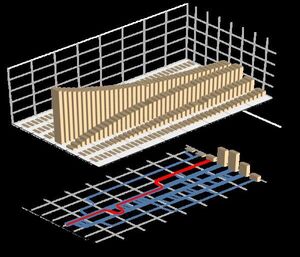
A benchmark for single-electron circuits
"A new methodology for an abstract and universal description of the fidelity of quantum circuits Manipulating individual electrons with the goal of employing quantum effects offers new possibilities and greater precision in electronics. However, these single-electron circuits are governed by the laws of quantum mechanics, meaning that deviations from error-free operation still occur – albeit (in the best possible scenario) only very rarely. Thus, insights into both the physical origin the and metrological aspects of this fundamental uncertainty are crucial for the further development of quantum circuitry. To this end, scientists from the Physikalisch-Technische Bundesanstalt (PTB) and the University of Latvia have collaborated to develop a statistical testing methodology. Their results have been published in the journal Nature Communications. Single-electron circuits are already used as electric-current quantum standards and in quantum-computer prototypes." [...]
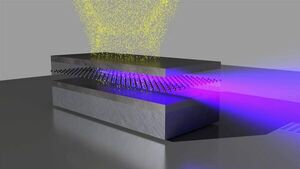
Better bundled: new principle for generating X-rays
"Physicists from Göttingen University develop method in which beams are simultaneously generated and guided by "sandwich structure” X-rays are usually difficult to direct and guide. X-ray physicists at the University of Göttingen have developed a new method with which the X-rays can be emitted more precisely in one direction. To do this, the scientists use a structure of thin layers of materials with different densities of electrons to simultaneously deflect and focus the generated beams. The results of the study were published in the journal Science Advances. To generate X-rays in ordinary X-ray tubes, electrons that have been accelerated by a high voltage, collide with a metal anode. The atoms in the metal deflect and slow down the electrons on their path, or the electrons excite the metal atoms to emit radiation as they bump into each other." [...]
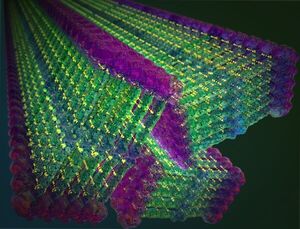
Researchers construct molecular nanofibers that are stronger than steel
"Self-assembly of Kevlar-inspired molecules leads to structures with robust properties, offering new materials for solid-state applications. Self-assembly is ubiquitous in the natural world, serving as a route to form organized structures in every living organism. This phenomenon can be seen, for instance, when two strands of DNA — without any external prodding or guidance — join to form a double helix, or when large numbers of molecules combine to create membranes or other vital cellular structures. Everything goes to its rightful place without an unseen builder having to put all the pieces together, one at a time. For the past couple of decades, scientists and engineers have been following nature’s lead, designing molecules that assemble themselves in water, with the goal of making nanostructures, primarily for biomedical applications such as drug delivery or tissue engineering. “These small-molecule-based materials tend to degrade rather quickly,” explains Julia Ortony, assistant professor in MIT's Department of Materials Science and Engineering (DMSE), “and they’re chemically unstable, too." [...]
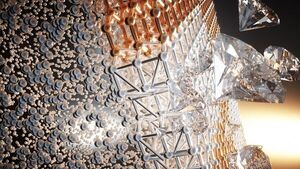
Researchers use nanomaterials to make 2D diamond clusters at room temperature
"Atomically thin, 2D hexagonal boron nitride (h-BN) is a promising material whose protean ability to undergo phase transformations to strong, super lightweight, chemically stable, oxidation-resistant films makes them ideal for protective coatings, nanotechnology thermal applications, deep-UV light emitters, and much more. The possibilities embodied in different polytypes of h-BN include the ultra-hard diamond phase, a cubic structure (c-BN) with strength and hardness second only to actual carbon diamonds. Key to fabricating such materials is the ability to induce and control the transformation between their various crystalline phases, in a way that is efficient and cost effective enough to allow for economies of scale. While synthesizing such materials in their “bulk” or 3D configurations requires immense pressure and heat, researchers at the NYU Tandon School of Engineering have discovered that h-BN in layered, molecule-thin 2D sheets can phase transition to c-BN at room temperature. In a new study, a team led by Elisa Riedo, Professor of Chemical and Biomolecular Engineering at NYU Tandon, and in collaboration with Remi Dingreville at the Center for Nanotechnologies at Sandia National Laboratories, produced experiments and simulations using a nanoscopic tip compressing atomically thin, 2D h-BN layers to reveal how these room-temperature phase transitions occur and how to optimize them, partly by varying the number of layers in the h-BN thin film. The research, “Pressure‐Induced Formation and Mechanical Properties of 2D Diamond Boron Nitride,” whose authors include Angelo Bongiorno, Professor of Chemistry at the City University of New York; Filippo Cellini, former post doc in Riedo’s PicoForce Lab at NYU Tandon; Elton Chen of Sandia National Labs; Ryan L. Hartman, an Associate Professor of Chemical and Biomolecular Engineering at NYU Tandon; and Francesco Lavini and Filip Popovic, Ph.D. students in Riedo’s lab, appears as the cover story in the Volume 8, Issue 2 of the journal Advanced Science." [...]

Metamaterial Tiles Boost Sensitivity of Large Telescopes
"A multi-institutional group of researchers has developed new metamaterial tiles that will help improve the sensitivity of telescopes being built at the preeminent Simons Observatory in Chile. The tiles have been incorporated into receivers that will be deployed at the observatory by 2022. The Simons Observatory is the center of an ambitious effort to measure the cosmic microwave background — electromagnetic radiation left over from an early stage of the universe — using some of the world’s largest and most sophisticated ground-based telescopes. These measurements will help improve our understanding of how the universe began, what it is made of and how it evolved into what it is today. “The Simons Observatory telescopes will use a new ultra-sensitive millimeter-wave camera to measure the afterglow of the big bang with unprecedented sensitivity,” said lead author Zhilei Xu from the University of Pennsylvania. “We developed a new low-cost absorbing tile that will be used in the camera to absorb environmental emissions that can obscure the signals we want to measure.” In the Optical Society (OSA) journal Applied Optics, the researchers show that the metamaterial microwave tiles they developed absorb more than 99 percent of millimeter wave radiation and retain their absorptive properties at the extremely low temperatures in which the millimeter-wave camera operates." [...]
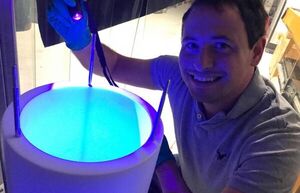
Compelling evidence of neutrino process opens physics possibilities
"The COHERENT particle physics experiment at the Department of Energy’s Oak Ridge National Laboratory has firmly established the existence of a new kind of neutrino interaction. Because neutrinos are electrically neutral and interact only weakly with matter, the quest to observe this interaction drove advances in detector technology and has added new information to theories aiming to explain mysteries of the cosmos. “The neutrino is thought to be at the heart of many open questions about the nature of the universe,” said Indiana University physics professor Rex Tayloe. He led the installation, operation and data analysis of a cryogenic liquid argon detector for neutrinos at the Spallation Neutron Source, or SNS, a DOE Office of Science User Facility at ORNL. The study, published in Physical Review Letters, observed that low-energy neutrinos interact with an argon nucleus through the weak nuclear force in a process called coherent elastic neutrino-nucleus scattering, or CEvNS, which is pronounced “sevens.” Like a ping-pong ball bombarding a softball, a neutrino that hits a nucleus transfers only a small amount of energy to the much larger nucleus, which recoils almost imperceptibly in response to the tiny assault. Laying the groundwork for the discovery made with the argon nucleus was a 2017 study published in Science in which COHERENT collaborators used the world’s smallest neutrino detector to provide the first evidence of the CEvNS process as neutrinos interacted with larger and heavier cesium and iodine nuclei." [...]

Highly efficient grid-scale electricity storage at fifth of cost - researchers modify hybrid flow battery electrodes with nanomaterials
"Researchers in WMG at the University of Warwick, in collaboration with Imperial College London, have found a way to enhance hybrid flow batteries and their commercial use. The new approach can store electricity in these batteries for very long durations for about a fifth the price of current technologies, with minimal location restraints and zero emissions. The researchers enhanced three hybrid flow cells using nitrogen doped graphene (exposed to nitrogen plasma) in a binder-free electrophoresis technique (EPD) Wind and solar power are increasingly popular sources for renewable energy. Unfortunately, intermittency issues keep them from connecting widely to the National grid. One potential solution to this problem involves in the deployment of long-duration battery technology, such as the redox flow battery. Despite its great promise the current costs of this system are a key determining factor to real-world adoption." [...]

New blueprint for more stable quantum computers
"Researchers at the Paul Scherrer Institute PSI have put forward a detailed plan of how faster and better defined quantum bits – qubits – can be created. The central elements are magnetic atoms from the class of so-called rare-earth metals, which would be selectively implanted into the crystal lattice of a material. Each of these atoms represents one qubit. The researchers have demonstrated how these qubits can be activated, entangled, used as memory bits, and read out. They have now published their design concept and supporting calculations in the journal PRX Quantum. On the way to quantum computers, an initial requirement is to create so-called quantum bits or 'qubits': memory bits that can, unlike classical bits, take on not only the binary values of zero and one, but also any arbitrary combination of these states." [...]

Record-breaking Laser Link Could Help Us Test Whether Einstein Was Right
"Scientists from the International Centre for Radio Astronomy Research (ICRAR) and The University of Western Australia (UWA) have set a world record for the most stable transmission of a laser signal through the atmosphere. In a study published today in the journal Nature Communications, Australian researchers teamed up with researchers from the French National Centre for Space Studies (CNES) and the French metrology lab Systèmes de Référence Temps-Espace (SYRTE) at Paris Observatory. The team set the world record for the most stable laser transmission by combining the Aussies’ ‘phase stabilisation’ technology with advanced self-guiding optical terminals. Together, these technologies allowed laser signals to be sent from one point to another without interference from the atmosphere. Lead author Benjamin Dix-Matthews, a PhD student at ICRAR and UWA, said the technique effectively eliminates atmospheric turbulence. “We can correct for atmospheric turbulence in 3D, that is, left-right, up-down and, critically, along the line of flight,” he said." [...]
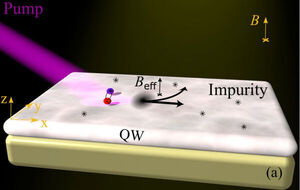
ITMO Physicists Discover New Physical Effect
"The scientists called it the anomalous exciton Hall effect. It occurs when a laser affects a semiconductor plate in the presence of a magnetic field. This phenomenon can be potentially used for studying exciton quasiparticles. The research is published in Physical Review Letters. There is a relatively simple experiment that can be performed at home. You only need five components: a small metal plate, a regular battery, a magnet, a pair of wires, and a voltmeter." [...]
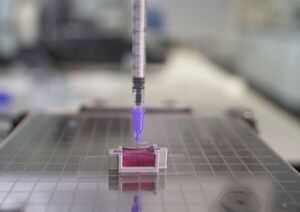
Scientists use novel ink to 3D-print ‘bone’ with living cells
"3D printers may one day become a permanent fixture of the operating theatre after UNSW scientists showed they could print bone-like structures containing living cells. Scientists from UNSW Sydney have developed a ceramic-based ink that may allow surgeons in the future to 3D-print bone parts complete with living cells that could be used to repair damaged bone tissue. Using a 3D-printer that deploys a special ink made up of calcium phosphate, the scientists developed a new technique, known as ceramic omnidirectional bioprinting in cell-suspensions (COBICS), enabling them to print bone-like structures that harden in a matter of minutes when placed in water. While the idea of 3D-printing bone-mimicking structures is not new, this is the first time such material can be created at room temperature – complete with living cells – and without harsh chemicals or radiation, says Dr Iman Roohani from UNSW’s School of Chemistry. “This is a unique technology that can produce structures that closely mimic bone tissue,” he says. “It could be used in clinical applications where there is a large demand for in situ repair of bone defects such as those caused by trauma, cancer, or where a big chunk of tissue is resected.” Associate Professor Kristopher Kilian who co-developed the breakthrough technology with Dr Roohani says the fact that living cells can be part of the 3D-printed structure, together with its portability, make it a big advance on current state-of-the-art technology." [...]

Solar material can “self-heal” imperfections, new research shows
"A material that can be used in technologies such as solar power has been found to self-heal, a new study shows. The findings - from the University of York - raise the prospect that it may be possible to engineer high-performance self-healing materials which could reduce costs and improve scalability, researchers say. The substance, called antimony selenide (Sb2Se3), is a solar absorber material that can be used for turning light energy into electricity. Re-grow Professor Keith McKenna from the Department of Physics said: “The process by which this semi-conducting material self-heals is rather like how a salamander is able to re-grow limbs when one is severed. Antimony selenide repairs broken bonds created when it is cleaved by forming new ones. “This ability is as unusual in the materials world as it is in the animal kingdom and has important implications for applications of these materials in optoelectronics and photochemistry.” The paper discusses how broken bonds in many other semiconducting materials usually results in poor performance." [...]

“Liquid” machine-learning system adapts to changing conditions
"The new type of neural network could aid decision making in autonomous driving and medical diagnosis. MIT researchers have developed a type of neural network that learns on the job, not just during its training phase. These flexible algorithms, dubbed “liquid” networks, change their underlying equations to continuously adapt to new data inputs. The advance could aid decision making based on data streams that change over time, including those involved in medical diagnosis and autonomous driving. “This is a way forward for the future of robot control, natural language processing, video processing — any form of time series data processing,” says Ramin Hasani, the study’s lead author. “The potential is really significant.” The research will be presented at February’s AAAI Conference on Artificial Intelligence." [...]

Optimizing Traffic Signals To Reduce Intersection Wait Times
"A Texas A&M-led research team developed a system that uses machine learning to improve the flow of traffic at intersections. Traffic lights at intersections are managed by simple computers that assign the right of way to the nonconflicting direction. However, studies looking at travel times in urban areas have shown that delays caused by intersections make up 12-55% of daily commute travel, which could be reduced if the operation of these controllers were more efficient. A team of researchers led by Guni Sharon, professor in the Department of Computer Science and Engineering at Texas A&M University, has developed a self-learning system that uses machine learning to improve the coordination of vehicles passing through intersections. The researchers published their findings in the proceedings of the 2020 International Conference on Autonomous Agents and Multiagent Systems. Many traffic signals today are equipped with signal controllers that serve as the “brains” of an intersection." [...]
Documentação
A documentação é parte essencial do processo de aprendizagem e a Internet além de artigos interessantes de explorar também tem alguma documentação em formato PDF interessante de ler. Todos os links aqui apresentados são para conteúdo disponibilizado livremente pelo editor do livro.

The MagPI 102
"Inside The MagPi magazine #102 – Build the ultimate media centre Play games, stream movies, listen to music and more. This Raspberry Pi-based media centre is is an amazing addition to your television. Raspberry Pi Pico microcontroller. Discover the story behind the development of Pico, and get great tips on how to set up and get started with Raspberry Pi’s new microcontroller board. Discover electronics with Raspberry Pi 400. Connect a Raspberry Pi 400 to a breadboard and learn to build simple circuits with this easy-to-follow tutorial." [...]
Projetos Maker
Diversos Projetos interessantes.
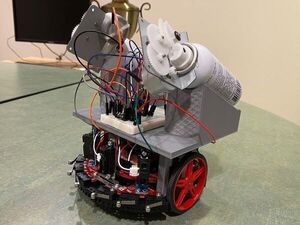
Autonomous Disinfecting Robot
"This is an autonomous mobile disinfecting robot that disinfects a confined space by deploying aerosol disinfectant. Introduction and Acknowledgements It is a vital need at this moment to have frequent and consistently effective sterilization of bacteria and viruses in a variety of facilities and homes. It is also evident that in the scenarios where sterilization of walls and floors is concerned, there are simply not enough manhours available to consistently clean walls and floors by hand at repeated time intervals. This is especially true in hospitals and hospices, where the available staffing is a precious commodity. The use of a robot to complete these tasks is a workable solution to this problem and would be welcome in thousands of workplaces and homes that cannot afford more complete solutions. This is a capstone project completed by a team including Harris Godwin, Garrett Mccarty, and myself for the Electrical Engineering Senior Project course under the instruction of Dr. Cyril Okhio at Kennesaw State University." [...]
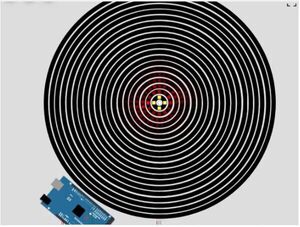
100 beautiful FastLED Arduino Projects on Wokwi 2021
"Kindle your creativity with FastLED projects on the Arduino platform in 2021. Wokwi Arduino simulator provides a platform to simulate online This project is a presentation of FastLED Arduino projects simulated for free on wokwi Arduino simulator. it represents contributions from various people around the globe. As much as possible, I have made sure to attribute the code to the author/publisher and have retained the direct link to the source. If there are any issues, please direct message me or leave a comment! Let us begin" [...]
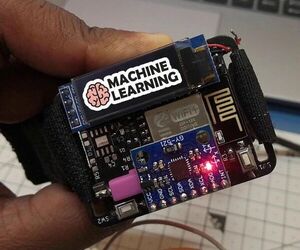
Machine Learning Based Gesture Detection Watch (ESP8266)
"The world is certainly getting better everyday at technology based on gestures because it’s very intuitive, easy to use and clearly makes the interaction with gadgets and things around you futuristic and fancy! So, just to be on the trend we’ll be taking the watch we built in the previous instructable and plunge in some ML and see if we can detect what kind of gesture we are performing, and maybe in upcoming instructable we can use this gesture to perform some very cool projects based on this. Supplies: These are the list of products which can help you do this project with ease Esp12E OLED display MPU6050 Haptic motor(exact one) Haptic motor(alternative) 3.3V regulator 105mah battery Velcro HeaderPins Angled Header Pins Wires FTDI Male USB PCB Soldering Gun Soldering Lead Foam sheets" [...]

Weather and news station (e-paper and Raspberry Pi)
"Fed up of ugly weather station ? Build your own providing current weather and forecast but also air pollution tracking and top news ! Features This project : Call a weather and news API to get information Parse the incoming JSON to use it later Create a GUI thanks to PILLOW (suggest method by screen manufacturer) Print it on a 7.5" e paper display" [...]
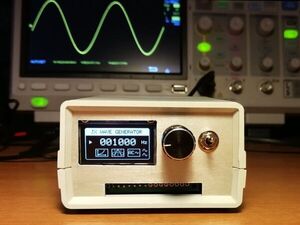
JX Wave Generator
"Use Arduino, an OLED display and an AD9833 DDS module to create a useful wave generator for your lab. Story For a long time I have put off buying an oscilloscope. Now, after purchasing it, it's time to also have an inexpensive signal generator for hobby use, essential for diagnosing audio circuits and more. Combining the two passions for electronics and computing, the best thing is to do it yourself with Arduino. FEATURES - Output frequency between 1 Hz and 999999 Hz - two modes of frequency variation: logarithmic and single digit - three types of wave, sine, triangular and square - AC or DC output coupling - ability to sweep continuosly between two predefined frequency values - controlled exclusively by a single knob - integrated screen saver to preserve the life of the oled display" [...]

COVID Security with OpenCV and TensorFlow
"Right now, it is very important that everyone around us does their part and wears a mask! This device can help with that! For Hack the North, my team and I thought of the brilliant idea of creating a device to mitigate those who do not have masks on. It uses machine learning to determine whether or not you have a mask on, and lights a respective LED depending on the result (green LED for yes!, and red LED for no). This device can be used as a friendly reminder to put a mask on, as a security system, or just a reminder for yourself while your leaving your house to take one! " [...]

Not Your Typical 1Hz Source
"In this post, I go over how to generate a 1Hz clock source through an unusual way. I have been looking for an accurate clock source for another project (that I will be publishing here soon). The more accurate an oscillator or crystal is, the more expensive it becomes. The easiest way to generate a 1Hz clock source is to generate or use a 32.768 kHz source. It's a common frequency available and it cleanly divides down to 1Hz. During my search for accurate 32.768 kHz TCXOs, I found one from Maxim IC." [...]
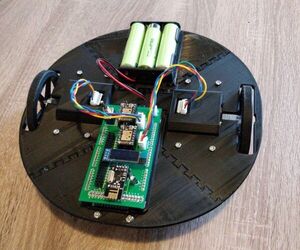
Building a Moving Platform Robot From Scratch
"My name is Niels Post. I am a Computer Science student from the Netherlands. This robot is part of my internship at the Vrije Universiteit Brussel. The robot is meant for use as a simple moving platform robot. It is able to drive and turn specified distances, and receive commands wirelessly. The robot is controlled through a webinterface (see picture)." [...]
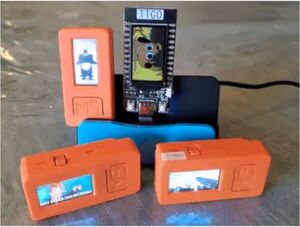
Arduino Animated GIF Player
"Play any animated GIF file from SPIFFS directly onto TFT screen as-is, WITHOUT converting to RGB565 or PROGMEM as script. Based on Arduino_GFX and gifdec, espgfxGIF is an Arduino sketch that plays animated GIF on TFT screen of some Arduino Dev modules, mainly esp32 and esp8266. Features: - Button A - Invert display - Button B - Adjust Brightness - Power button - Reboot and play the designated animated GIF, or a random GIF file in the SPIFFS if the GIF_FILENAME is not defined. - High performance. If the GIF has no delay, most esp32 module is capable to play 70fps for a 135 x 240 animated GIF. DEV Modules tested: - M5Stack M5Stick-C (esp32 + ST7735) - TTGO T-Display (esp32 + ST7789) - D1 mini with 2.4 TFT shield (esp8266 + ILI9341)" [...]

Pi & CODESYSPLC-Arduino to control Motors using a LCD Shield
"Use a Raspberry Pi with CODESYS PLC to control motors attached to an Arduino Uno and EASE using input from another LCD Shield with EASE. Overview: In this tutorial, you will learn how to set up a Raspberry Pi with CODESYS to act as both a PLC and an EtherCAT master. It will be used to control the motors attached to an EtherCAT Arduino Shield by Esmacat (EASE) Slave device using input from an LCD Shield with another EASE slave device First, some general information about Raspberry Pi and CODESYS is discussed. After learning to set up the Pi and CODESYS, you will learn to implement a practical project to control the motors attached to the Arduino Uno and EASE based on user input from another EASE device connected with a LCD Shield by updating EASE registers using CODESYS. EtherCAT Arduino Shield by Esmacat (EASE): EASE is an EtherCAT slave that connects to an EtherCAT master (PC/ Laptop/ Dedicated Master devices like the Esmacat Master S and Esmacat Master C.) It can be stacked on top of Arduino, other MCU boards with an Arduino Uno form factor, and shields. This shield allows high-speed communication with an industry-standard EtherCAT protocol for high-performance robotic applications." [...]
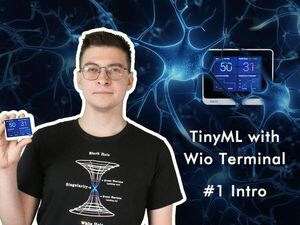
Learn TinyML using Wio Terminal and Arduino IDE #1 Intro
"This article is the first article of the series about TinyML. For more details and video tutorial, watch the corresponding video! ML as you might have guessed stands for Machine Learning and in most of cases (not always though) nowadays refers to Deep Learning. Tiny in TinyML means that the ML models are optimized to run on very low-power and small footprint devices, such as various MCUs. It is a subset of ML on the Edge or Embedded Machine Learning. Embedded devices come in all sorts of shapes and sizes, starting from “embedded supercomputer” Nvidia Jetson Xavier AGX to the tiniest of microcontrollers, for example ESP32 or Cortex M0." [...]

High Preformance LoRa Radio Link
"ExpressLRS is an open source RC link for RC applications. It is based on the fantastic semtech SX127x/SX1280 hardware combined with an ESP8285, ESP32 or STM32. ExpressLRS supports a wide range of hardware platforms as well as both 900 MHz and 2.4 GHz frequency options. ExpressLRS uses LoRa modulation as well as reduced packet size to achieve best in class range and latency compared to current commercial offerings. ExpressLRS can run at various packet rates, up to 500hz or down to 25hz depending on your preference of range or low latency. At 900 MHz a maximum of 200 Hz packet rate is supported." [...]

Ohmmeter 2.0
"Miguel Alejandro Ramrez Anaya and Jos Miguel Galeas Merchn, students of 'Electrnica Creativa' (Creative Electronics), a Beng Electronics Engineering module at the University of Mlaga, School of Telecommunications. We decide to make as final project a Ohmmeter using Arduino Mega development board. Supplies: - Arduino Mega - 4 RGB Leds - 3 Red Leds - 3 White Leds - 4 x 4 Membrane Switch Keypad - OLED Display I2C 128 x 64 pixels and 0.96 Inch - 2 connection terminals for resistors - Potentiometer 50k - Resistors - 1kΩ x1 - 220Ω x3 - 22kΩ x1 - 68Ω x1 - 4 screws" [...]

OneBox - Control Zoom, Meet, and Teams Online Meetings
"Online meetings have taken over the world it seems. And as a teacher, I alternate between running classes and being an attendee in my bosses and colleagues’ meetings. But there are so many platforms, and each one operates a little differently. I wanted to have an easy control that I could use while attending all meetings, and that would keep me aware of my camera and mic status. That's where this box comes in. The purpose is to have command of all the frequently used camera and mic actions for my most frequently used online platforms, but just as a button control." [...]
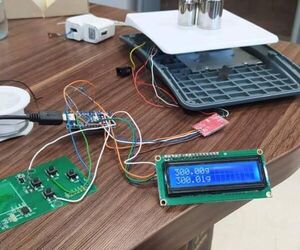
DIY Arduino Precise 5 Kg Scale With Built-in Temperature Sensor and Automatic Calibration System
"The scale is a combination of science and engineering, the amount of mechanical pressure on the load cell produces some signals, the signal amplifies with HX711 and then it gets read by Arduino. for better reading, making the noiseless environment free of vibration, air circulation and rapid temperature tolerance is necessary. I made this Scale in a way to calibrate itself automatically with 300g precise weight and also show working temperature for a better reading result. However, loadcells have some basic drawbacks like drifting its offsets which is inevitable anyway. by the way, keep it in mind that the precision and time of reading are against each other, as much as the precision increases, the time consumed to read the signal would increase too. I used some parts and box of a dead scale, you can make it simply by yourself." [...]

Attiny85 Simultaneously Using I2C And Spi Protocols
"The Attiny85 does not support specific hardware for SPI and I2C comunications as on ATmega series, instead there is a hardware module called UNIVERSAL SERIAL INTERFACE (USI) that can be only configured to perform SPI or I2C. In this small project, I'd like to share how to perform both SPI and I2C protocols simultaneously on the ATTiny85 by: Using USI for I2C with TinyWireM library to read MPU-6050. Using remaining pins for Software SPI to control one LED MATRIX 13x15. Main components: 200pcs x LED 3mm, optional color, blue in my case. 2pcs x Double Sided DIY Protoboard Circuit 7x9cm. 1pcs x DigiSpark ATTiny85." [...]
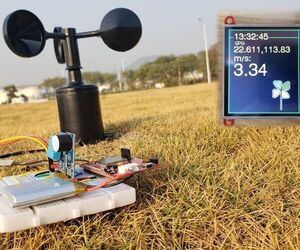
Wind Speed Monitor Via MQTT
"Once I failed to control the drone because of the wind so I want to measure the wind speed to know whether it is suitable for the drone flight in the wild. So I am thinking of how to measure the wind speed in the field I can check it anywhere remotely. Thanks to Arduino and MQTT, after days of learning/ studying, and also some hardware modules from Makerfabs, I solved this perfectly. In this tutorial, I want to simply introduce the MQTT and how to build an MQTT network to get the wind speed of specific place. What Is MQTT Message Queuing Telemetry Transport (MQTT) is a machine-to-machine protocol designed to widely lightweight publish/subscribe message transportation. It minimizes network bandwidth and resource requirements while ensuring reliability by keeping packet headers as small as possible." [...]
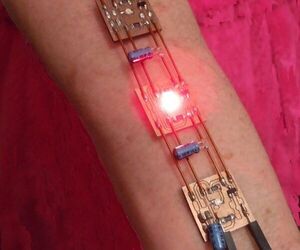
Discrete Chain Link Oscillator
"The following project will describe how to turn 5 discrete components into a building block which when serially connected will form an extendable flashing lighting chain. Just a simple discrete solution without the aid of a microcontroller. Even so each block can have a different coloured LED and these can be assembled within the chain in any colour combination required. Not a replacement for a Neopixel just different. Supplies: Point LED red* BC849 SOT23* *equivalent components may be substituted. 47K 1206 470R 1206 10uF/16V Electrolytic 21 AWG solid core Enamelled copper wire or flexible wire." [...]

Small and Cheap Tiny OLED for Ender 3 (stock and SKR)
"Searching for cheap and small screen for your printer? This is it. Small but very clear screen is perfect for ender or other printers based on skr boards. Screen is prepared for newest Marlin 2.0.7.2 Becouse 27 pin is for buzzer, you still can use this pin for bltouch adapter on stock motherboard creality. I not tested on SKR 2.0, but it shoud work baceouse this is almost same board. " [...]

Remote Control LED Cylinder
"Welcome to another LED creation I made which showcases a fun use of NRF24L01 in combination with Arduino's and LED's. This project took me many months to plan, design, and shoot a video for so I hope you all enjoy this project and let me know if you have any comments or suggestions :) This video will be another visual of the step by step process I went through for the project. Let's get started! Supplies: Tactile Push buttons (x12) PCB Board Arduino Nano (x2) NRF24L01 (x2) LED Strip (x48 LEDs) LED Bulb for remote. 1 amp switch (x2) Screws Jumper Wires Hot Glue 3D Printer" [...]
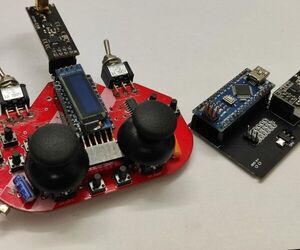
Arduino Based Serial Transmitter
"Commercially available transmitter and receiver pairs are usually PPM or PWM based. Using them with any microcontroller is problematic as you require a lot of pins and hence isn't that efficient. Using Serial modules like Xbee or HC-05 can solve this issue but will have less range as compared to the commercial PWM/PPM RF pairs, hence cant be used for applications like drones or UAV. To solve this, we can use NRF24l01+ (PA+LNA) module which theoretically provides a huge range of 1100m (700m+ in ideal conditions) along with Arduino to make a versatile commercial Like Transmitter which can be configured to send almost everything! This design was made considering these problems. This project was also featured in Altium Stories." [...]
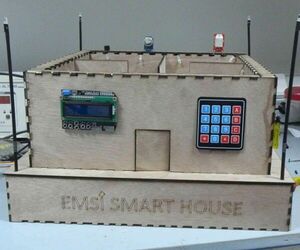
A Sensor Network Controlled by Arduino Within a Wooden House Model
"In this Instructable I will show you my first electronic and IT project that I have made during my studies at the Moroccan School of Engineering Sciences (EMSI). As an IT engineer I learned on my own how to use the electronic components and how to program Arduino with C language to control them all in a wooden house model that I designed and then cut with a laser cutter. The main idea of this project is to make something that work and also look similar to a domotic house in the form of a wooden model This model has the following functions : - The entrance door can be opened with a code entered on the matrix keyboard. Once opened, the door closes automatically after five seconds. - The lights in one area of the house (living room/kitchen/bedroom/toilet+bathroom) can be turned on or off using the push buttons. - The automatic lighting of the house is done when it is dark, and when it is daytime the lights are automatically turned off." [...]
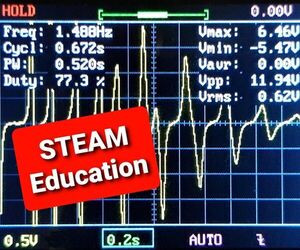
AC Generators
"These STEAM experiments are thinking to teach our kids (maybe 7th or 8th Grade) AC generators basics, building these easy experiments at classroom. These experiments will allow us to review concepts such as: Ohm´s law Electromagnetic induction basics AC generator basics Shape wave captured by an oscilloscope Half wave rectifier AC/DC conversion RC circuits design Signal filtering At the end of this instructable I propose several challenges to build at classroom. I hope you like. " [...]
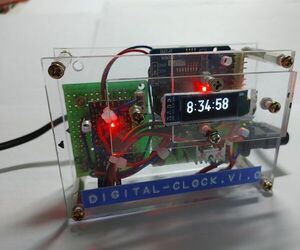
OLED Digital Clock With Arduino Pro-mini
"This is digital clock using 0.91 inch OLED and arduino pro-mini. It’s the first time for me to utilize the very small OLED display and tiny pro-min board. Therefore, simple project is chosen as digital clock making is relatively easy and not much complex. While making the circuit above, I need to handle several challenges like below. *** - Pro-mini board type is very confusing as 3.3v and 5v type of boards are available - As pro-mini board lacking USB interface for programming, additional break-out board (USB to serial programmer) is necessary for uploading sketch code - 0.91 inch OLED is using I2C interface and DS3231 real time clock module also using I2C for communication - Choosing correct voltage regulator is necessary for power up the clock circuit *** When you using arduino Uno or Micro boards, circuit wiring and uploading program is very easy as there are many how-to contents are available in Internet. But for the simple project such as clock making, personally thinking that using expensive Uno or micro boards is a kind of luxury." [...]
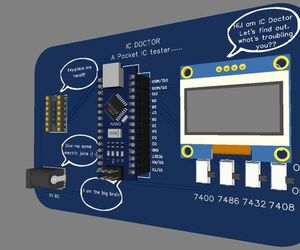
IC Tester Aka IC Doctor
"This is a custom made IC tester pcb which can test logic gate IC of 74XX series.I love to call it "IC Doctor" When you are working on DIY project and don't have time to test each IC, this device comes into play which can test IC's within seconds and main feature it can easily t into your pocket and can be carried almost anywhere... Supplies: Arduino Nano 4 Switches Oled Display DC Barrel Jack 14 Dip IC Holder" [...]
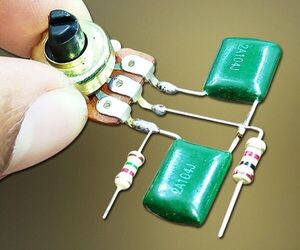
How to Make Low Cost Bass-Booster Circuit
"In This Project We Will Tech You, How To Make A Simple Bass. Booster Circuit At Home Easily. You Can Make This Circuit At Very Low Cost. To Make This Amplifier Circuit We Will Need Some Electronics Component. Component List : 1. Mylar Polyester Film Capacitor 2A104J (2 Pieces) 2." [...]
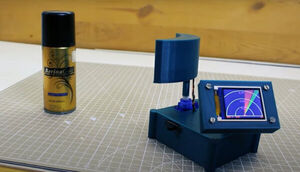
How to Build Your Own Arduino-Powered Mini Radar
"Have need your own mini-radar system? Then why not consider making one of your very own! In this short tutorial, we'll take you, step by step,(more or less) through the process. Like any project of this nature, you are going to need a few bits and bobs. For this build, you will need: Arduino Nano HC-SR04 ultrasonic sensor SG90 servo motor 1.8" ST7735 Display (or equivalent) Soldering kit Screwdriver set 9V battery and connector Electrical wires and soldering gear. Assorted PCB wire female connectors and male pins." [...]
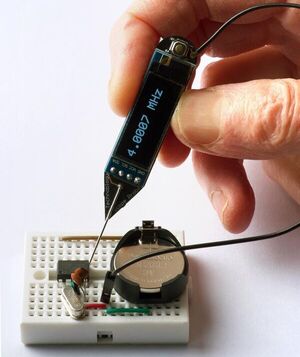
Frequency Probe
"The Frequency Probe is a handheld tool designed to help you debug your circuits by giving a visual indication of the frequency or voltage at the probe. For a periodic waveform it gives a digital readout of the frequency, with a range of about 1Hz to 5MHz and an accuracy of better than 0.3%. For a voltage level it gives a readout of the voltage: It is based on an ATtiny84A, and is powered from a small Lipo cell. Introduction The obvious way to implement a frequency meter is to count the number of pulses within one second; this then directly gives the frequency. I refer to this as Frequency Mode. The disadvantage of this method is that a long sample time is needed to measure low frequencies accurately." [...]
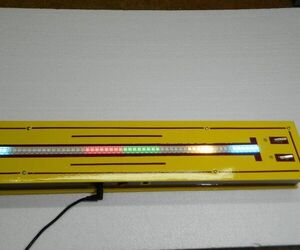
DIY Arduino 1D Pong Game With WS2812 Led Strip
"In this project it is presented 1-dimensional version of the classic game Pong made with NeoPixel LED strip. The speed of the ball is changed after every hit, making it more difficult to hit the ball in time. Device is very simple and easy to make and contains the following components: - Arduino Nano microcontroller - WS2812 Led strip with 60 leds - 4 buttons - Buzzer - Transistor - and two resistors" [...]
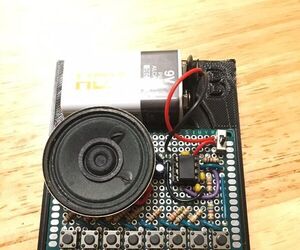
Toy Organ
"I was scrolling through AliExpress and found a number toy piano kits that used a 555 IC and a series of resistors. It was a stay-at-home-because-of-COVID weekend, and, having all the parts at home, I decided to try to build one from scratch, rather than wait 4 months for a kit to arrive. I should have built it on a breadboard first, but I thought someone somewhere must have built and tested this thing, so I went ahead and just prototyped the thing. I was wrong; I don't think it was tested at all. It made sounds, but all of the resistors were 2K (see yellow circuit diagram above, but do NOT use the yellow diagram above) and that meant that the pitch of each note was quite random. Here is what you will need to build a toy organ that actually sounds like a toy organ: Supplies: - speaker 8 Ohm 0.5 W (or 0.25W) - momentary tactile buttons ×8 - ON-OFF switch - TLC555 - 0.1uF ceramic capacitors (104) ×3 - 4.7uF electrolytic capacitor - Lots of resistors 1K5; 1K2; 180; 330; 270; 1K2; 1K; 680; 22; 380; 5K6; 820; 1K - 9V battery clip - 9V battery - 5cm × 7cm double-sided PCB - 8-Pin DIP socket (optional)" [...]
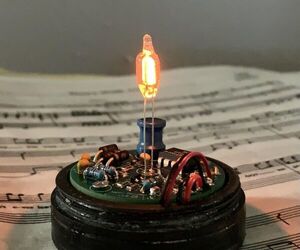
Neon Lamp Tea Light
"Neon lamps, also known as neon glow lamps, are wonderful little bulbs that glow orange when you give them high voltage and low current. Neon lamps are mostly obsolete now; they belong to an era when many electronic devices were supplied with high voltages in order to drive vacuum tubes, and the voltages required for neon lamps were convenient and accessible. Compared to an LED which might have a voltage drop of 3V, a neon lamp's striking voltage on the order of 100V makes it impractical for use in modern circuits, which use transistors instead of vacuum tubes and require much lower voltages. However, neon lamps look really cute! They deserve better than to be consigned to the history books, thrown out in favor of surface-mount LED's lacking any sense of personality. With this in mind, I decided to create a small, portable neon bulb light." [...]
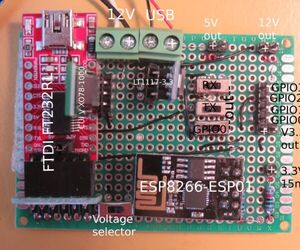
Development Board for ESP8266-ESP01
"ESP01 is the smallest available package for the popular Espressif ESP8266 WiFi System on a Chip. It is often used to provide WiFi connectivity to other Arduino boards, but is quite capable in its own right. Its small form factor makes it especially handy if space is at a premium. The ESP01 is somewhat finicky to work with in developing new circuits. The pins are in a 2x4 header format, so it can't be plugged into a standard breadboard. Four GPIO pins are exposed, but three have dual function." [...]

Desktop-Sized Infinity Dodecahedron
"You may have seen various "infinity dodecahedrons" or other polyhedra across internet, such as here, here, here, or here. They are all mesmerizing in their own way. However, each of them has, for me, one major problem. They are all waaay too big. All of them are about the size of a basketball, if not larger. This is fine if you're going to a festival, or are going to hang them from a ceiling, but if you'd like to put one on a desk or a shelf, it's probably not going to be very practical." [...]
Raspberry Pi Pan Tilt Tracking | OpenCV AI Kit Tutorial | App4
"Today we are going to build a Pan Tilt tracking camera using a Raspberry Pi and OpenCV AI Kit. How it works, is that the smart camera uses object detection to adjust these servo motors so that the center of the image lines up with the object center. All this works at Real-time 30 Frames per second on a Raspberry Pi . So if you want to build your own then lets get straight into the tutorial. " [...]
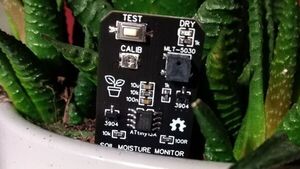
TinyMoisture - Soil Moisture Monitor based on ATtiny13A
"TinyMoisture monitors the soil moisture of your plants and gives an alarm if you forget to water them again. TinyMoisture uses the resistance measurement method to determine the soil moisture. The two probes together with the substrate form a variable resistor. The more humid the soil, the better its conductivity and the lower the electrical resistance. Together with the 10k fixed resistor, a voltage divider is formed. This voltage can be measured by the ADC of the microcontroller." [...]
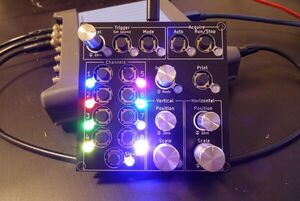
ScopeKeypad
"This project is to create a traditional oscilloscope interface to use with the PicoScope software (or more generally other usb scopes). It's useful for people who are more comfortable with traditional oscilloscope buttons and dials. It uses an STM32 (arduino 'bluepill') as the main processor. It acts as a keyboard, so pressing buttons or rotating dials just sends keyboard shortcuts to the PC over USB. " [...]
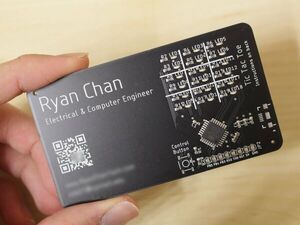
Tic Tac Toe on a Business Card
"A business card that can play the classic game of Tic Tac Toe. With the internship application season in full swing, I decided to make some PCB business cards that I can give away to hopefully stand out from the crowd (well, as soon as the pandemic is over and in-person interviews are a thing again...). This card specifically plays the classic game of tic tac toe. Like normal Tic-Tac-Toe, there is a grid with 9 positions that a player can place their mark. One player is Blue and the other player is Red instead of the traditional X and O. Your current position is marked by a blinking blue or red LED." [...]

Temperature Controlled RGB LED Light Stick – Mood Light
"The circuit presented here is a LED light stick which changes its color in respect with the room temperature. This is an Arduino compatible open source project consisting of 20 x WS2812B Addressable RGB LEDs, LM35 Temperature Sensor and ATmega328 microcontroller. Atmega328 microcontroller reads the LM35 temperature sensor and changes the RGB LEDs color as per sensor analog output. Multiple units of this board can be installed in the room to create full light color effects. Colors of this light will change as the atmosphere’s temperature changes. Placing the LED stick underneath a furniture or behind picture frames on the wall helps create a nice effect as well as improve the ambience of the room." [...]
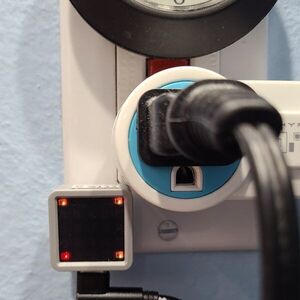
The Water Watcher
"Monitoring the pilot light on my water heater. This project consists of two parts (or three parts if you count the MQTT server through which they communicate, or four parts if you count the wifi router, or, hey, just stop counting). One part is a sensor that monitors the status of the pilot light and main burner in my water heater. The other part is small LED matrix that graphically displays that status. The monitor broadcasts the status over MQTT every 30 seconds, and the display is updated based on the status messages. This is all done locally on my wifi network." [...]
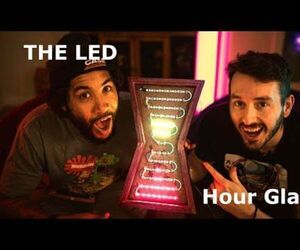
LED Hour Glass
"In this article I describe how we made an hour glass with leds as the sand. We were always interested in making something that visually flows like sand and decided to use an hour glass to start. The movement is not completely fluid given the resolution of the amount of pixels, but it does resemble sand falling down and reacts to tilting and orientation changes. Keep reading and watch the video to find out how we did it! Supplies: ws2812b led strip 5v power supply MMA8451 accelerometer arduino" [...]

Raspberry Pi YouTube Boombox
"In this project we’re building a Raspberry Pi powered YouTube lofi radio player with Adafruit’s BrainCraft HAT! We designed and 3d printed this case to house the electronics and features a built-in speaker and display! The Pi is set up in kiosk mode and automatically plays any YouTube music stream. This uses digital I2S, so it's got high quality stereo output! The BrainCraft HAT has everything you need to make an all-in-one YouTube player. The built in joystick can be used to change the stations and adjust the volume." [...]

7400 Series Logic Clock
"This project is 7400 series logic ICs based clock. It keeps time solely based on discrete logic ICs and a stable clock source. For the display LEDs, I am using common anode 7 segment displays. This variant is 0.56" tall and has a red illumination color. There are 2 sets of LEDs as use the "colons" in a typical clock display. The circuit keep track of time, in 12 hour format, using an external 1 Hz source." [...]

HealthConnect : An IoT Arm Band powered by MicroChip
"A Wearable Medical device to stream the person's health data (ECG, Heart Rate, SpO2, Activity) in a secured AWS for remote monitoring Due to global Covid-19 pandemic forcing many people to remain at home, the current attention on patient-centered care is becoming more dependent on virtual medical treatments. Many elderly people who have chronic diseases, require frequent check-ups and need to be continually monitored. It is time-consuming for them to drive back and forth to visit physicians, and alternatives such as in-house care are unreasonably expensive for the majority of patients. There is also an increased risk of exposure to Covid-19, which can be risk for the elderly people. These factors have led to the increased adoption of remote patient monitoring. " [...]
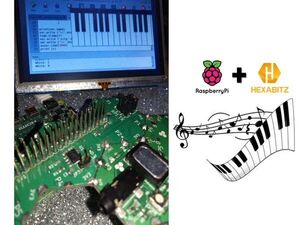
Hexabitz Piano Controllable from Raspberry Pi and Python GUI
"This project uses Hexabitz modules to play the music notes. It’s definitely an effective way to learn about modules, Python GUI & music Make your own piano with Hexabitz modules and Raspberry Pi. This project uses Hexabitz Modules to play the music notes. It’s definitely an effective way to learn about modules, Python GUI & Music. " [...]
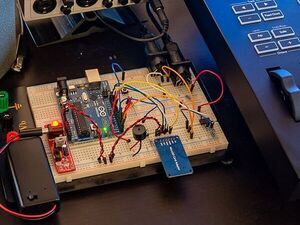
Creating a MIDI Pass-Through Recorder
"Create an inline MIDI recording with an Arduino, an SD card module, and never lose your musical noodling ever again! Creating a MIDI pass-through recorder If you've ever used audio software on the computer, you probably know that MIDI exists: a signalling protocol that allows controllers to control virtual instruments like synths. It's also the protocol used by real audio hardware to talk to each, and you can think of it as the language in which, rathar than communicating a fluctuating voltage signal or series of discrete sample values, devices talk about what is being done on them ("A4 got pressed", "F4 got released", "the mod wheel moved down", etc). As such, there are two ways to record digital instruments (real or virtual): you can record the sound they're making, or you can record the MIDI events that cause them to make those sounds, and that's where things get interesting. There are many, many ways to record audio, from microphones to line monitors to audio interfaces, on dedicated hardware, computers, phones, etc. etc., but there aren't all that many ways to record MIDI events." [...]
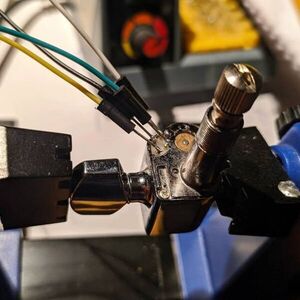
Hacking Auto-Tuning Guitar Pegs for Arduino/MIDI Control
"I've always wanted to automatically detune and retune the strings of a guitar while the guitarist was playing. In this project I tried, and managed, to do exactly that with the help of technician Johan Nördstrom. After completing the project I wrote some music for guitarist Ruben Mattia Santorsa. Attempt 1 The first attempt was on a classical guitar. Johan and me tried to build a system with two linear motors that would move a second, mobile bridge up and down, in fact modifying the length of the strings. It didn't work as planned, since the noise of the motors was overwhelming, killing the feeble sound of the guitar." [...]
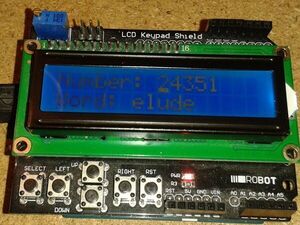
Diceware password lookup box
"Diceware is a way of generating harder to crack passwords. You roll 5 dice, look up the number in a table and jot down the word you find there, by chaining a string of words together you create a hard to crack password that is easier to remember. The use of a table is time consuming so I thought I would try to create a box where I enter the dice number and it looks the word up for me. The original table runs in at 7775 words but there are now a couple of different word lists available. The Electronic Frontier Foundation (EFF) has produced a second list with the aim of eliminating the more obscure words, words which sound alike and a variety of other quirks of the original table. The EFF also has 2 lists of short words requiring only 4 dice for each word." [...]
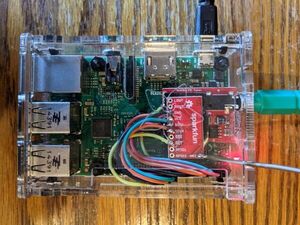
FM Radio Data System Scanner
"A Raspberry Pi equipped with 2 FM radios, one plays the station and the other scans the dial and shows the artist and title on each station I've always been a fan of FM radio and, driving around Austin I'm constantly hitting the presets on my car radio to hear the latest tunes. Many stations now use the Radio Data System to show the current song's title and artist on the car radio. I've always wanted a to see a list of what was playing on each station so I built a gadget to do that using a Raspberry Pi and two Silicon Graphics Si4703 FM Receiver chips. One FM receiver connects to the car Aux audio input. The other constantly scans specified FM stations and sends the station's current artist and title to an Android app running on my phone using the phone's wifi hotspot, where I can select that station. Hardware I'm using a Pi 2 Model B v1.1 with a freshly installed Raspbian GNU/Linux 10 (buster) OS enclosed in an Adafruit (adafruit.com) Pi Box Plus ($12.50)." [...]
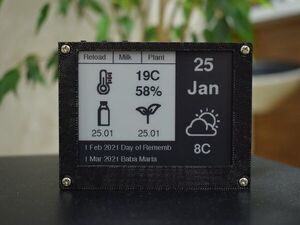
EPaper Dashboard
"E-Paper Multipurpose Dashboard powered by Li-Po with roughly four months battery life I needed a device that can store the date of a specific event, which I can check later. To be more precise, I needed a device that can store the last date I fed the flowers. The device must be portable and powered by a battery. And because a whole display only for one date is a bit of a waste, I decided to add more features like weather and calendar widgets. The obvious choice for the display was E-Paper, and for the IC initially, I picked esp8266, but after comparing it with esp32, I had to switch it. The esp32 has a feature that is very important for this project - esp_sleep_enable_ext1_wakeup." [...]
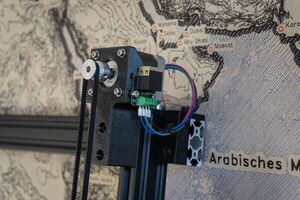
A Giant Map drawn with a Pen
"For quite some time I entertained the thought of having a wall-sized world map. Maybe it started when I read the blog post by Dominik Schwarz about his map, maybe a bit earlier. Exactly as Dominik I soon realized it’s really hard to buy a map which is neither ugly nor has a low resolution/amount of details. There are a few maps I enjoy visually and probably on the top of the list is the bathymetry map of Heezen and Tharp, drawn by Heinrich Berann. While the sea floor depth data itself is accurate and this is meant to be a scientific documentation, the map and its status as an art object benefits a lot from the artists execution. However, the process of getting from information to image involves in this case a manual artistic process." [...]
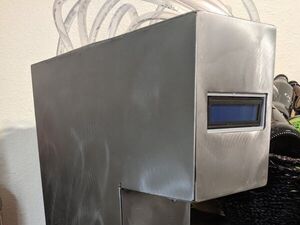
BarBot
"A cocktail machine that makes precise drinks. This Barbot is an open source Arduino cocktail mixing machine controlled by an app via Bluetooth. It has been designed to use 8 ingredients for making the cocktails, dispensing the correct amount from each to mix your cocktail of choice. Cocktails can be chosen using the mobile app that connects to the Barbot via Bluetooth. " [...]

Make your UPS smarter with ESP8266 and PCF8591
"The UPS did not shut down the computer in the event of a power outage. This hack makes the UPS smarter, I made this circuit with ESP8266 I have a well-functioning UPS with a faulty network interface, I use it for the iobroker server. The problem was that it did not shut down the PC in the event of a prolonged power outage. To smarter the UPS, I made the following circuit using ESP8266 and PCF8591 and built it into the UPS. " [...]
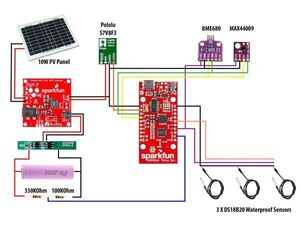
Solar-powered greenhouse monitoring station
"A monitoring station for my off-grid greenhouse. Multiple environmental parameters, WiFi, solar-powered, cloud connectivity. This period of homely isolation has made me seriously think about sustainability and ways of fending off the possibility of a zombie apocalypse. Therefore, in true "The Martian" style, I've decided to build a greenhouse and science the s*** out of it by outfitting as much automation to it as I possibly could. Oh, and it grows food as well! I've documented the process of building the environmental monitoring device." [...]

my_smarthome#1
"Infrastructure project to get a "smarter" home. Raspberry pi as mqtt-broker, as data collector & data transmitter. ESP8266 as mqtt-client. The Story The goal of the project is to install a infrastructure for IoT another projects at home.To verify the functionality, I have implemented a ESP8266 to measure the temperature and the humidity of my bedroom. The ESP8266 sends the collected data over MQTT to a raspberry pi which runs as MQTT broker. On the raspberry pi runs also a application (data_collector) which subscribes on the topics from the ESP8266 and save the collected data in a mongodb." [...]

Logic Meter
"Logic Meter is a piece of electronic test equipment meant to make certain functions of a logic analyzer as easy to use as a multimeter. You can see a demo at https://youtu.be/55UjsmX5F90 It looks like a multimeter: it's handheld, battery operated, has a display, has a knob for selecting the measurement you want to make, and has a set of buttons for navigating a menu to set options (e.g. setting the baud rate for the UART "measurement"). But unlike a multimeter, the logic meter's probes are for digital signals only (max. 5 volts) and the "measurements" are the sorts of things you'd do to test a microcontroller-based system. The currently implemented measurements are: UART In: connect two of the logic meter's probes to ground and a UART signal, and the logic meter will display the UART data on the screen." [...]
That's all Folks!



